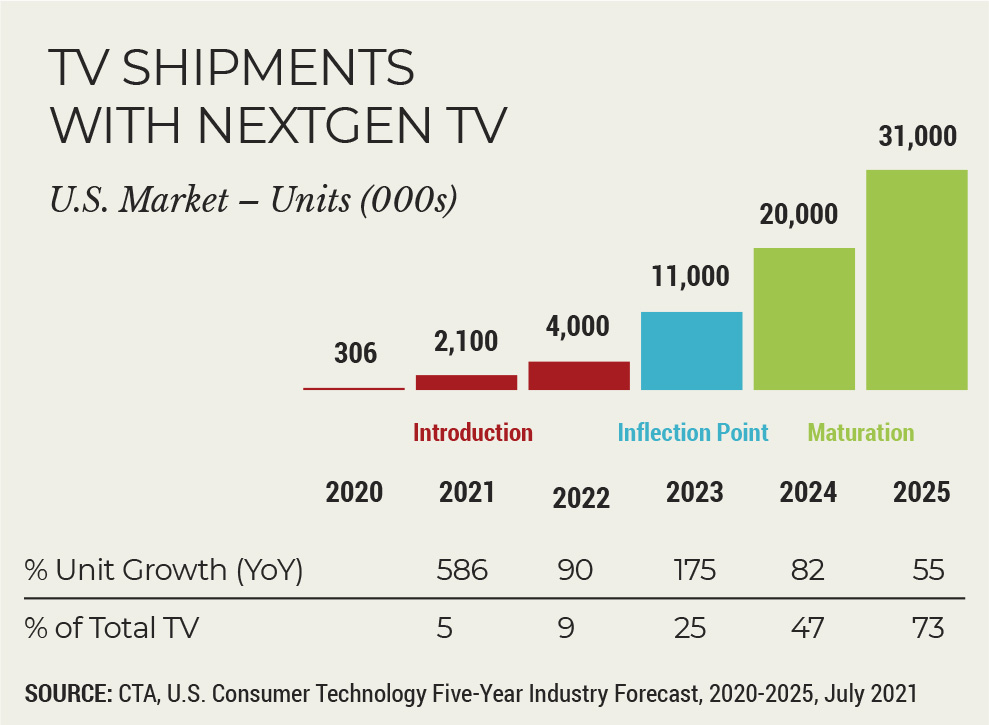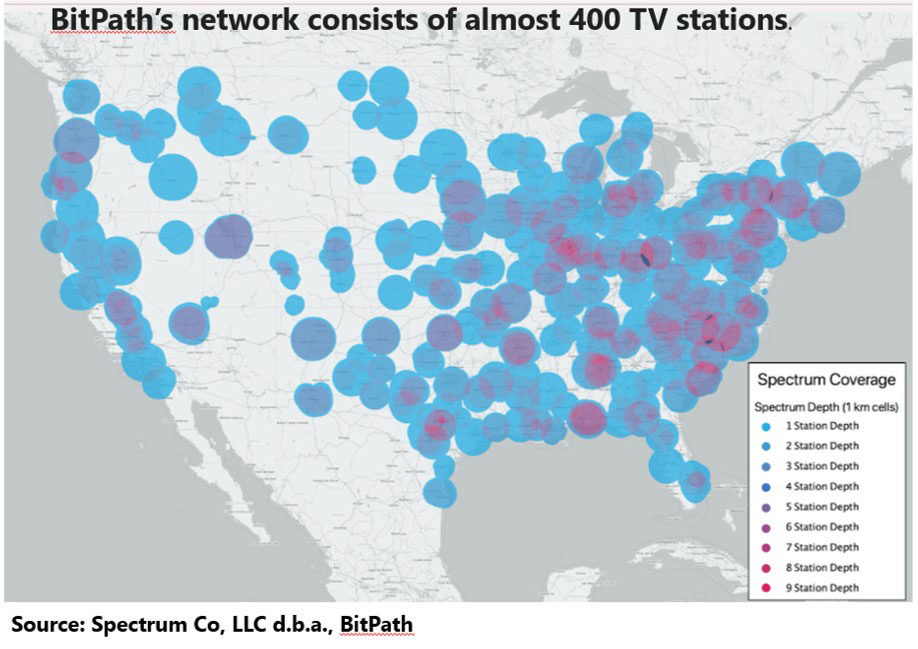NextGen TV Has a Busy Summer
ATSC 3.0 sees dozens of rollouts, innovative projects and promising predictions, but concerns about viewer acceptance remain

The numbers for NextGen TV look good right now:
• Stations in 16 more markets are lighting up their ATSC 3.0 signals this summer, bringing the total to 47 metro areas.
• About 150 stations are involved, with many transmitting multiple channels.
• Sales forecasts envision 2 million receivers this year, 4 million next year and 11 million in 2023, plus a new line of 3.0 set-top boxes.
With those data points in hand — and a September multi-station launch in Washington, D.C., to provide a tech showcase for politicos — NextGen TV cheerleaders are bubbling with enthusiasm.
"NextGen TV signals now reach 22% of households in our stations' footprints,” said Mark Aitken, VP of advanced technology at Sinclair Broadcast Group and president of its One Media subsidiary. Aitken said every market Sinclair launch offers "Advanced HDR (high dynamic range) by Technicolor" content and “hybrid TV” is also in the works across the company's stations.
Overall, according to FCC data, one-third of U.S. homes will be within range of a NextGen TV signal as of mid-August when Atlanta stations light up.
Broadcasting & Cable Newsletter
The smarter way to stay on top of broadcasting and cable industry. Sign up below
Sinclair’s “hybrid TV” approach includes STIRR, the ad-supported video-on-demand streaming service. “We’ll have OTA (over-the-air) and OTT (over-the-top) brought together in our hybrid environment,” Aitken said.
Scale Will Be ‘A Lot Faster’
The Pearl TV broadcast group consortium backing the new format is “100% focused on scale,” the always-ebullient managing director Anne Schelle said. “This is not your grandmother’s [digital] transition. The economics are much different. … Scale will happen a lot faster.”
Patrick Butler, president of America’s Public Television Stations, noted that about a dozen public TV stations have transitioned to 3.0 and that New Mexico PBS now carries all five streams in the new format: PBS, PBS Kids, FNX, World and Create.
Butler, though, said many public TV stations are “stymied” by the costs and have asked Congress for funding.

Analysts are keeping their expectations in check. Stephen Baker, VP of industry analysis at the NPD Group, said “we’re barely in the infancy” of NextGen TV.
“Until the costs [drop] and availability becomes more widespread, then whatever the tech and software bring doesn’t mean a lot,” said Baker, who follows consumer electronics for the market research firm.
Importantly, questions remain about the non-broadcast services NextGen TV promoters have promised: capabilities to provide new business options.
John Hane is president of BitPath, a joint venture of Sinclair and Nexstar Media Group, two of Pearl TV’s members. BitPath’s main mission is “to create data broadcasting services that are profitable and serve the public interest,” he said. To do that, it’s necessary to have 3.0 capacity “on the air,” he said. He expects to be on at least 25 towers this year and to serve more than 100 stations by the end of 2022.
BitPath, too, is “just at the beginning of the process,” Hane said.
At E.W. Scripps-owned WXYZ Detroit, a local development team customized Run3TV to match the station’s branding and supplied the framework with on-demand content that viewers can access via NextGen TV remotes.
“The content includes categorized news video packages along with daily weather forecasts from their local weather meteorologists,” Scripps VP and chief technology officer Bryan Dunbar said.
Adoption Coming Quickly
Catherine Badalamente, VP and chief innovation officer at Graham Media Group, has also focused on supplementary interactive content. She called the Pearl framework a “solid base” for developing live streams, VOD and data-based services.

Badalamente said Graham has been working with Google to experiment with addressable advertising — “initially within the supplementary content, but as we find solutions, we hope to directly monetize the broadcast ad breaks.”
After a year of pandemic-induced virtual development, the NextGen TV community will plunge into a round of personal meetings, addressing issues around operations and digital opportunities.
Up first is the Advanced Television Systems Committee’s 2021 NextGen Broadcast conference in Washington, D.C., Aug. 25 and 26. At the CEDIA Expo in Indianapolis on Sept. 1-3, NextGen TV hopes to make inroads prior to CES in Las Vegas in January.
September also will see the landmark launch of a special NextGen TV showcase in Washington, D.C., with coordination of signals between public TV station WHUT and WIAV, Sinclair’s newly acquired Class A station. Program details and promotional plans (including to policymakers) are still being developed.
Contributor Gary Arlen is known for his insights into the convergence of media, telecom, content and technology. Gary was founder/editor/publisher of Interactivity Report, TeleServices Report and other influential newsletters; he was the longtime “curmudgeon” columnist for Multichannel News as well as a regular contributor to AdMap, Washington Technology and Telecommunications Reports. He writes regularly about trends and media/marketing for the Consumer Technology Association's i3 magazine plus several blogs. Gary has taught media-focused courses on the adjunct faculties at George Mason University and American University and has guest-lectured at MIT, Harvard, UCLA, University of Southern California and Northwestern University and at countless media, marketing and technology industry events. As President of Arlen Communications LLC, he has provided analyses about the development of applications and services for entertainment, marketing and e-commerce.

